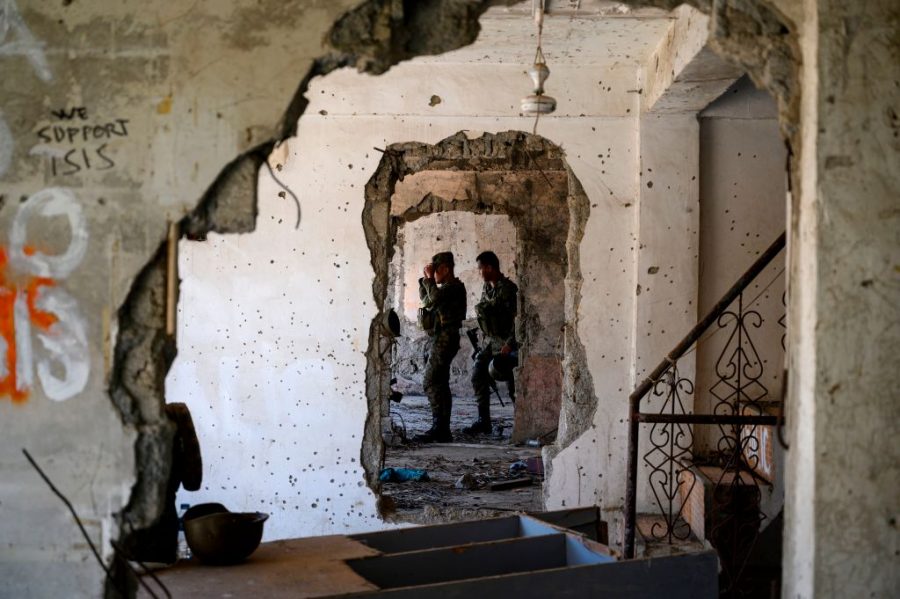
At 4 am on 8 May, 20 heavily armed militants occupied a public market at Datu Paglas, Maguindanao, in the southern Philippines. Abu Jihad, the group’s spokesperson, claimed that they were from the Karilalan faction of the Bangsamoro Islamic Freedom Fighters (BIFF). While no shots were fired, the presence of BIFF militants struck fear into the hearts of the town’s residents.
The militants retreated immediately after the Philippine Army engaged them in combat. An army spokesperson asserted that the militants had occupied the town to loot food from the market. While the BIFF had launched attacks on markets before, it had not plundered from civilian populations. Other jihadi terrorist groups in Mindanao, including Abu Sayyaf, have also attacked civilian assets for food. Does the change in modus operandi signal the decline of terrorist groups in Mindanao?
In 2008, Ameril Umbra Kato and some militants splintered from the separatist group Moro Islamic Liberation Front (MILF) to form the BIFF. The BIFF opposed the peace talks between the MILF and the government of the Autonomous Region of Muslim Mindanao and often launched attacks to try to thwart the negotiation process. Such actions have bred distrust between the locals and the MILF.
Like other groups in Mindanao, the BIFF has rarely launched attacks beyond its area of influence. Militancy in Mindanao is characterised by strong clan or tribal affiliations. BIFF militants, who are primarily ethnic Maguindanao, have a stronghold in the Maguindanao region. Militants from Abu Sayyaf and the Maute Group have also displayed a similar terror–territory–tribe nexus.
Jihadi terrorism in Mindanao has declined since 2020, and militant groups in southern Mindanao have suffered territorial losses. The BIFF, for example, ceded its base at South Upi, Maguindanao, to the Philippine armed forces in February 2021. The army also overran the bases of other groups, such as Abu Sayyaf and the Maute Group, in the same month.
Concurrently, the BIFF and Abu Sayyaf experienced a spike in militant surrenders. Reasons cited for surrendering include starvation, fatigue and the waning of financial support.
The territorial defeat and surge in surrenders are not coincidental. Militant groups in Mindanao had depended on their control of territory for their militant activities. Territorial safe havens have been used for organisational and operational purposes. In addition, control of safe havens could allow alternative forms of governance, thereby enabling terrorists to cultivate support from the local population.
But beyond the tactical utility of safe havens, militants depended on them for physical sustenance. Control of territory allows a group to grow its support base or exact taxes from the local people to feed its members. It’s no surprise, then, that terrorists cite starvation as one of the main reasons for surrender, because their physical space is being constricted.
A group’s ability to hold territory is also dependent on the number of trained militants in its ranks. The increase in surrendered militants affects the group’s ability to defend against military incursions. In addition, the military can get intelligence about militant groups by interrogating surrendered militants.
Some observers have attributed the decline of terrorism in Mindanao to Covid-19 measures, particularly the cessation of international travel, which has prevented non-regional foreign fighters from entering Mindanao. However, Southeast Asian militants could still smuggle themselves into Mindanao through the tri-border area with Malaysia and Indonesia. The Philippine government’s enhanced community quarantine strategy may further restrict the movement of local militant groups, though its effectiveness in conflict regions in Mindanao is questionable.
Arguably, cumulative military efforts over the years might have worn militants out. Since the Marawi siege in 2017, the military has continued conducting operations against terrorist groups in Mindanao, which led to the steady decline of militant strength.
Militants became desperate even before the Covid-19 pandemic. Jihadism researcher Quinton Temby has suggested that militants in Mindanao turned to suicide bombings in 2019 because they had to adopt a more aggressive posture in light of their smaller numbers. Suicide bombings were believed to be more effective in waging a war of attrition, in which both parties tried to wear their adversary’s resources out. However, the sheer difference in resources was sufficient for the military to wear down the militants.
As the difference in strength between the Philippine armed forces and militant groups increases, the bargaining power of the authorities increases proportionally. This increase in bargaining power has made surrender packages more attractive, which helps to explain the surge in surrenders that has further weakened militant groups.
While the number of active militants has decreased, the BIFF has maintained an effective presence on social media during the Covid-19 pandemic and is attempting to establish itself as the ‘leader of jihad’ in Mindanao. Spiritual leaders of the BIFF made multiple calls to fight the military during the pandemic. The group has regularly distributed videos about its training and operations and also published recruitment videos amid the Covid-19 crisis in an attempt to bolster its numbers.
An avenue of recruitment is from internally displaced people in Mindanao. More than 15,000 individuals have been displaced due to skirmishes between the military and various militant groups. The harsh living conditions in temporary shelters may result in pent-up anger that militant groups can exploit to make up their numbers.
Authorities must capitalise on what’s likely to be a temporary decline in terrorist numbers to refocus their efforts to build strong civil–military relations. This can be achieved by rebuilding disrupted communities. Beyond human rights, rehoming people who have been displaced by the conflict is critical to counterterrorism as it restricts the pathways for militant recruitment. The authorities should consider expediting the rebuilding of Marawi City, which is yet to be completed despite the ending of the siege there in October 2017.

